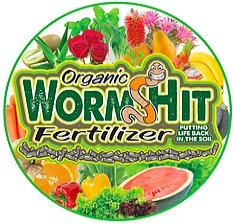
This article is bought to you by Wormhit.
By Angus Brown | Source: ABS, ABARES, MLA.
Back
at the end of April, the Australian Bureau of Statistics (ABS) released
their official numbers for Australian commodities. Additionally, the
Australian Bureau of Agricultural and Resource Economics and Sciences
(ABARES) have made some estimates for this year, and some short term
forecasts. There were some interesting trends in cattle herd numbers,
with some long term lows hit.
Ad - Try Wormhit - New aged pelletised Natural Fertiliser. Click here - Ad
Ad - Try Wormhit - New aged pelletised Natural Fertiliser. Click here - Ad
It obviously
takes some time for the ABS to collect the statistics required to post
official livestock numbers. The 30th of April was when we got a look at
the Agricultural Commodities report for 2017-18. There were some
surprises in the national herd.
Figure 1 shows
the year on year change and the national herd. The ABS has pegged the
cattle herd at 26.4 million head as at the 30th of June 2018. The herd
number represents a 0.8% rise in cattle numbers. The general thinking
was that the Australian herd was going to be lower in 2018, but the ABS
has adjusted its 2017 number lower.
So Meat
and Livestock Australia (MLA) had reported the herd at 27.3 million head
at the end of June 18, which was down 2.3% on the previous figure.




The
drought impacts had clearly been felt in NSW at the end of the 17-18
financial year. The ABS put the NSW herd at a 4.7 million head, which
was down 10.6% and at more than a 40 year low. The Queensland herd made
up for the fall in NSW. Cattle numbers in Queensland were up 8% at the
end of June 18. Queensland moved its share of the herd to 41%.
Ad - Try Wormhit - New aged pelletised Natural Fertiliser. Click here - Ad
Ad - Try Wormhit - New aged pelletised Natural Fertiliser. Click here - Ad
The
ABARES estimate for the national herd on the 30th June 19 has come in
at 25 million head. ABARES are predicting a solid 5.3% fall in the 18-19
financial year, the seventh largest decline of the last 40 years.
ABARES
made their forecast for 2019-20 when the season was looking like it
might be on the improve. Hence ABARES forecast a relatively steady
cattle herd for the end of the 2020 financial year.
Key points
* The ABS official herd number for June 2018 was higher, driven by Queensland.
* The NSW herd has fallen to more than a 45 year low.
* ABARES are forecasting a decline in the national herd to a 24 year low.
What does this mean?
Given
the way cattle slaughter has been tracking in recent times, the cattle
herd could decline more than ABARES are expecting. And ABARES are
expecting a 24 year low. For some time now, we have known that when the
season turns around cattle supplies are going to be tight. The longer
the drought has gone on, the tighter the projected supplies get.











Share Ag News Via